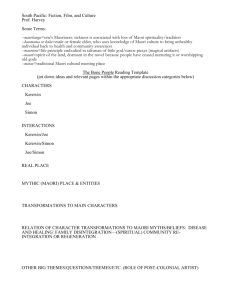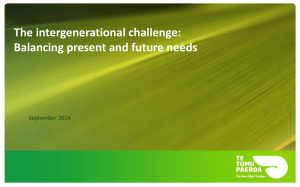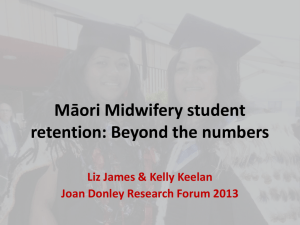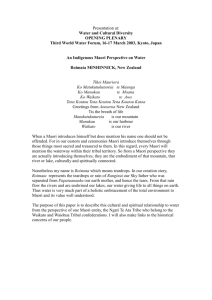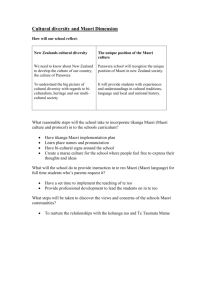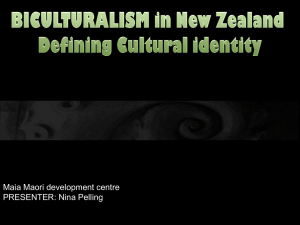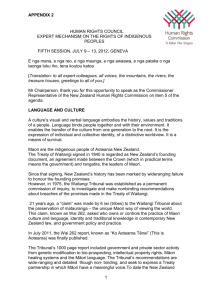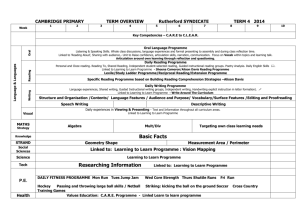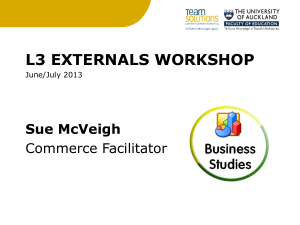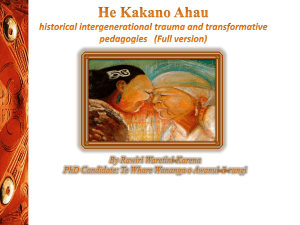(New Zealand Shipping Containers) (Word 2007, 1 MB)
advertisement
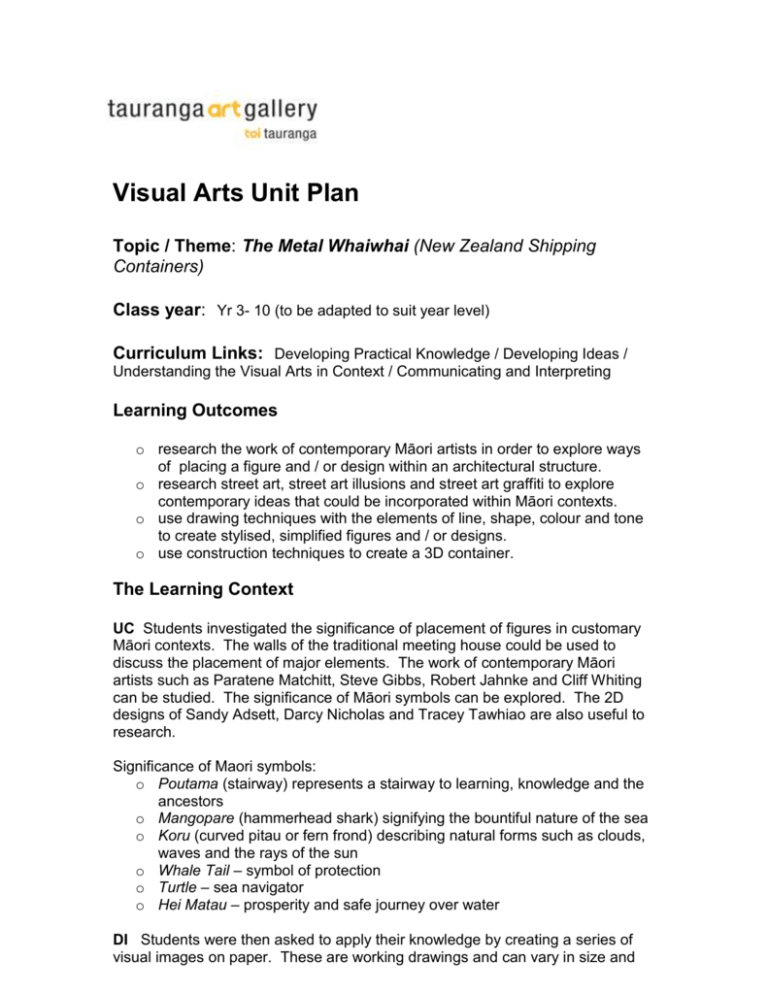
Visual Arts Unit Plan Topic / Theme: The Metal Whaiwhai (New Zealand Shipping Containers) Class year: Yr 3- 10 (to be adapted to suit year level) Curriculum Links: Developing Practical Knowledge / Developing Ideas / Understanding the Visual Arts in Context / Communicating and Interpreting Learning Outcomes o research the work of contemporary Māori artists in order to explore ways of placing a figure and / or design within an architectural structure. o research street art, street art illusions and street art graffiti to explore contemporary ideas that could be incorporated within Māori contexts. o use drawing techniques with the elements of line, shape, colour and tone to create stylised, simplified figures and / or designs. o use construction techniques to create a 3D container. The Learning Context UC Students investigated the significance of placement of figures in customary Māori contexts. The walls of the traditional meeting house could be used to discuss the placement of major elements. The work of contemporary Māori artists such as Paratene Matchitt, Steve Gibbs, Robert Jahnke and Cliff Whiting can be studied. The significance of Māori symbols can be explored. The 2D designs of Sandy Adsett, Darcy Nicholas and Tracey Tawhiao are also useful to research. Significance of Maori symbols: o Poutama (stairway) represents a stairway to learning, knowledge and the ancestors o Mangopare (hammerhead shark) signifying the bountiful nature of the sea o Koru (curved pitau or fern frond) describing natural forms such as clouds, waves and the rays of the sun o Whale Tail – symbol of protection o Turtle – sea navigator o Hei Matau – prosperity and safe journey over water DI Students were then asked to apply their knowledge by creating a series of visual images on paper. These are working drawings and can vary in size and shape. The drawings can include some, or all of the following depending on the age level. o traditional Maori or Pasifika designs (combined Māori and Pasifika designs could be explored) o contemporary designs (examples of tattoo could be used) o street art / graffiti (text – hand drawn and stencil art) PK Using an oblong shaped grid pattern (based on the proportions of a shipping container), students can transpose their working drawings onto paper or directly onto the prepared background that could be: o a photocopy of a container o the template of a box with similar proportions to a shipping container o a photograph of a container (if using the computer) UC Discussion held with students by teacher about work-in-progress. What do your designs symbolise? Student discussion responding to, and supporting student work will be undertaken. Use of correct terminology will be encouraged. Useful Websites He Papahuia Toi Maori (Tracy Murray) Maori Visual Culture in Visual Arts Education Years 1-6. This book describes teaching and learning opportunities and possibilities in the visual arts discipline and helps teachers give context to student learning about contemporary and customary Maori art forms. The teaching units encourage students to develop visual literacy in representing and understanding Maori visual culture. A companion book to He Wakahuia Toi Maori: Maori Visual Culture in Visual Arts Education: Years 7-10 (item 30701). http://www.learningmedia.co.nz/nz/products/moecatalogue/moecatdetail?recno= 602692 Katerina Te Heikoko Mataira’s book, Cry Baby Moon.(Diana –Grace Morris) http://www.storylines.org.nz/author_details.asp?author_id=196 This resource has been prepared by Grant Thompson , Education Manager - Tauranga Art Gallery This resource has been prepared by Grant Thompson , Education Manager - Tauranga Art Gallery
